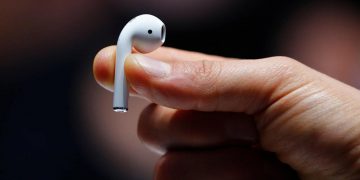A study was conducted by the experts with the WHO and China regarding the origins of the coronavirus, and they delivered a report comprising 316 pages recently. Although this particular report detailed the complicated origins of the pandemic, it did not provide much evidence regarding the origin of the coronavirus.
A press conference was conducted on 9 February this year and it announced the findings in this extensive document in which it was suggested by the researchers that SARS-CoV-2 (the virus responsible for causing Covid-19) most probably jumped into another animal from a bat prior to infecting humans. Besides this, it also mentioned that a lab incident will be an extremely unlikely process in which the coronavirus has entered the humans.
Although the question regarding the origin of the coronavirus still remains unanswered, 4 scenarios have been detailed by this report which proposes for its origin:
• It
transmitted directly from an animal like a bat to the humans
• Prior
to infecting the humans, it was transmitted from a bat through one
more species
• It had been introduced by means of frozen food
as well as the cold-chain
• Otherwise, it had its origin from
a lab incident
In the following paragraphs, we have mentioned several of the key findings.
Market pressures
The spillover of coronavirus to human beings from animals can be initiated by contact with livestock and wild animals.
This particular report which discusses a significant portion of the distribution and sampling of cases in the Huanan market suggests that further work will be needed for reviewing the supply chains feeding into it (as well as other markets in Wuhan).
The intention of the researchers was to comprehend the manner in which the virus arrived and also moved through Huanan by epidemiological data as well as a sampling of animals and exploring molecular information. Despite the fact that the Huanan market happens to be the epicenter of the investigation, just 28% of the previous cases have been exposed to only this market while the initial case did not have any exposure to the Huanan market.
In this particular market, the focus has been mainly on the animals which have been traded here as well as the wildlife which was brought in. A minimum of 10 stalls was involved in selling animals or products which consisted of chickens, snakes, ducks, badgers, deer, rabbits, crocodiles, hedgehogs, and bamboo rats.
There are a number of key points concerning the testing information:
• There
has been no proof of any animal infection identified from the animals
which were tested.
• According to the residents who had been
interviewed by the team, no live animals were sold at the
market.
• Comprehensive examination of the animal samples in
this market had tested negative.
• It
is not possible to assert whether the virus has been brought by any
customer or vendor into the market.
• In excess of 1.000 bats
were tested in Hubei province for viruses such as SARS-CoV-2, and
none of them tested positive.
According to the evidence found, there does not appear to be any reason to suggest that this particular market was actually the origin of the pandemic.
According to one more theory which was spread by Beijing recently, SARS-CoV-2 might have been brought into Wuhan by frozen food and cold-chain food products. Weak evidence has depicted that it is possible for coronavirus to survive on all these surfaces; however, there is no convincing instance of the cold-chain leading to Covid-19 infections away from China.
Overall, it has been mentioned by this report that is not possible to draw any solid conclusion regarding the role played by the Huanan market in the outbreak’s origin. Nevertheless, this does not imply that a jump to humans from the bat is not possible. This kind of leap might have happened somewhere else or in animals which have not been sampled yet.
At a seminar held in Sydney only recently, Edward Holmes, who happens to be a University of Sydney virologist, suggested minks as well as raccoon dogs that had not been tested in Huanan, had been fantastic candidates for the missing link required by the virus to jump to human from bats. Even though no evidence was found by the 2021 team regarding the fact that they had been in the market, a trip made by Edward Holmes in the year 2014 reportedly found raccoon dogs at Huanan.
Lab queries
Although the majority of the researchers are of the notion that the virus jumped to humans from animals and a lab incident is dubbed by the team as “highly unlikely”, you will come across some scientists who believe that SARS-CoV-2 might have been released accidentally from a laboratory in Wuhan.
The primary focus has been on a laboratory in Wuhan known as the Wuhan Institute of Virology which is known to study a massive collection of coronaviruses.
Even though the lab was visited by the research team in the month of February this year, there is no mention of this visit in the report. It is possible to find this trip’s details in one of the annexes of the report over 4 pages. The laboratory researchers are known to sample bats across the country for more than 10 years and study coronaviruses which are present within these mammals.
Several particulars regarding the trip depict:
• 19,000
samples had been collected by the lab and 2,481 tested positive for
coronaviruses
• A claim that every fieldwork has been done
using full PPE, although this fact has been challenged
• Even
though the staff at the laboratory has been questioned, no raw data
had been found
• Staff at the laboratory researching on
coronavirus tested negative in April 2019 as well as March 2020
Since no staff tested positive, this makes it unclear how the virus might have been carried out into Wuhan by a WIV member. As per the report, all these tests had been conducted in 2020. It is still debatable how fast the antibodies disappear; however, it has been suggested by recent studies that they persist for months which should make them undetectable this time.
























